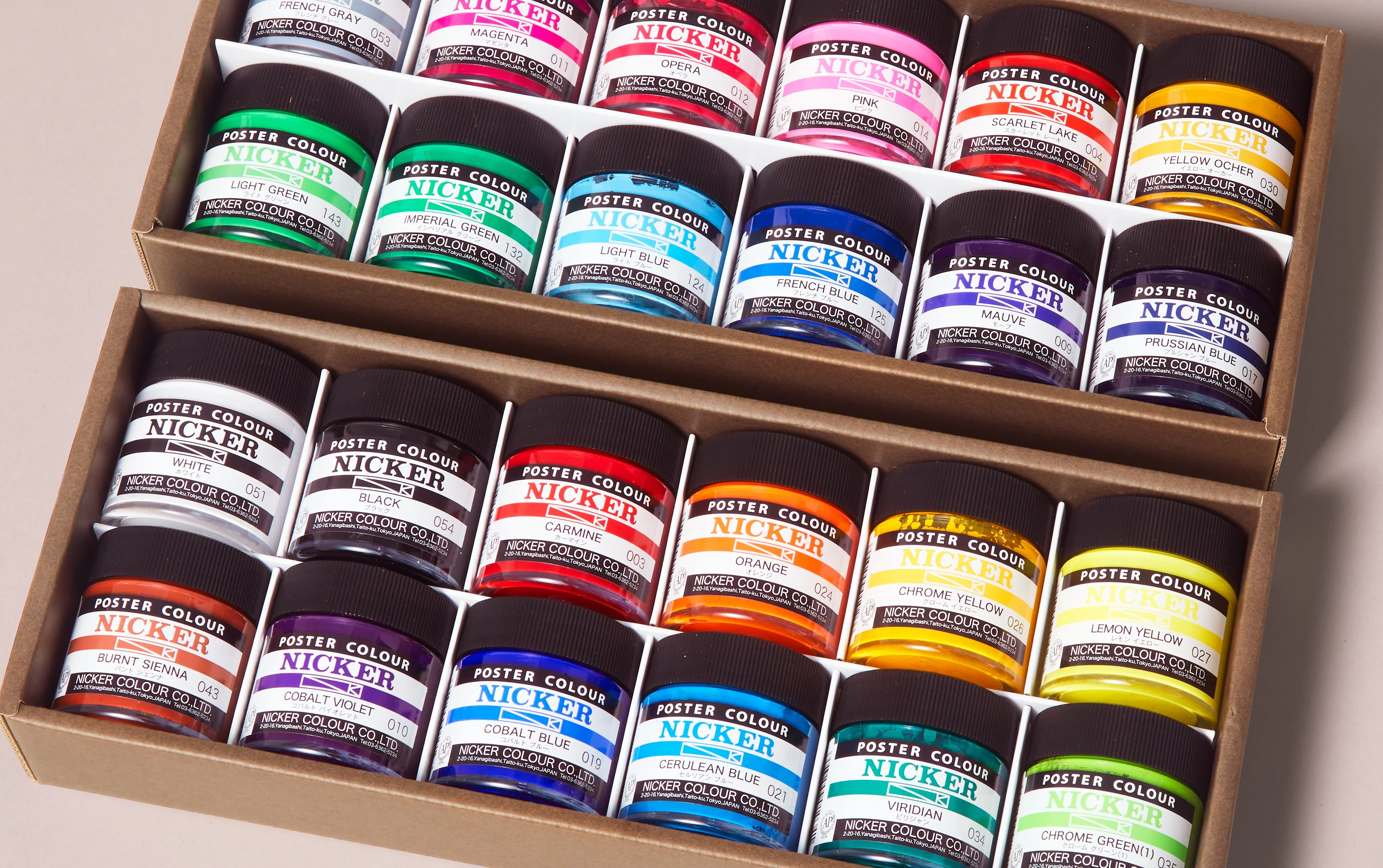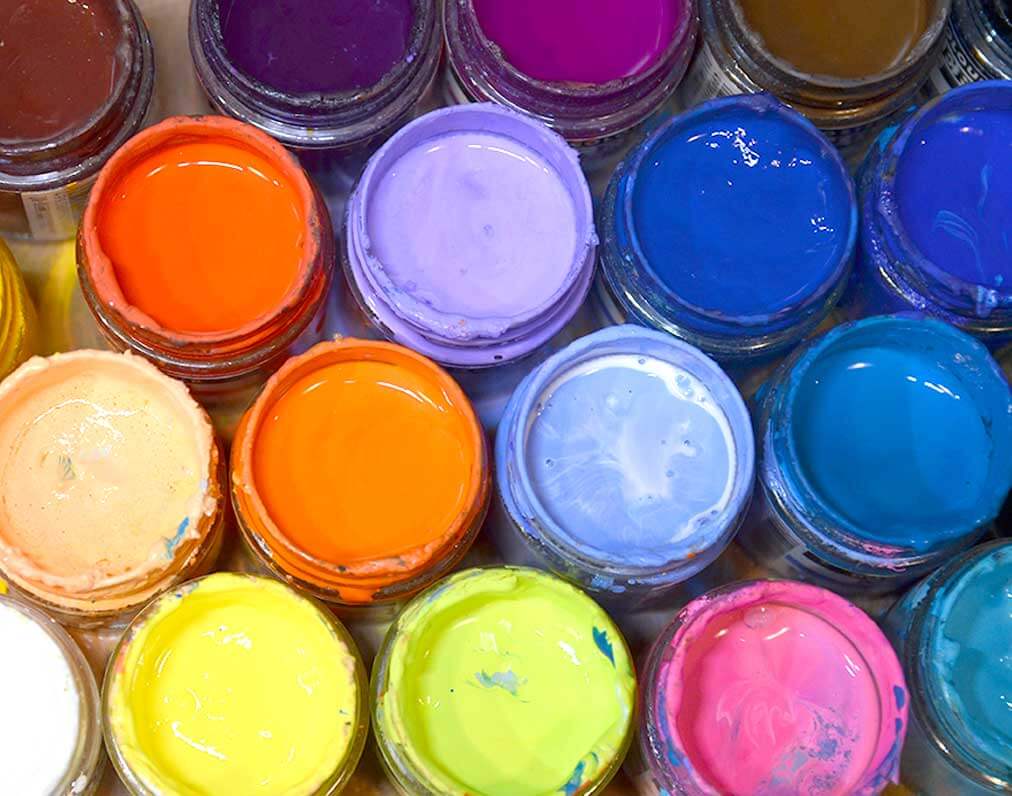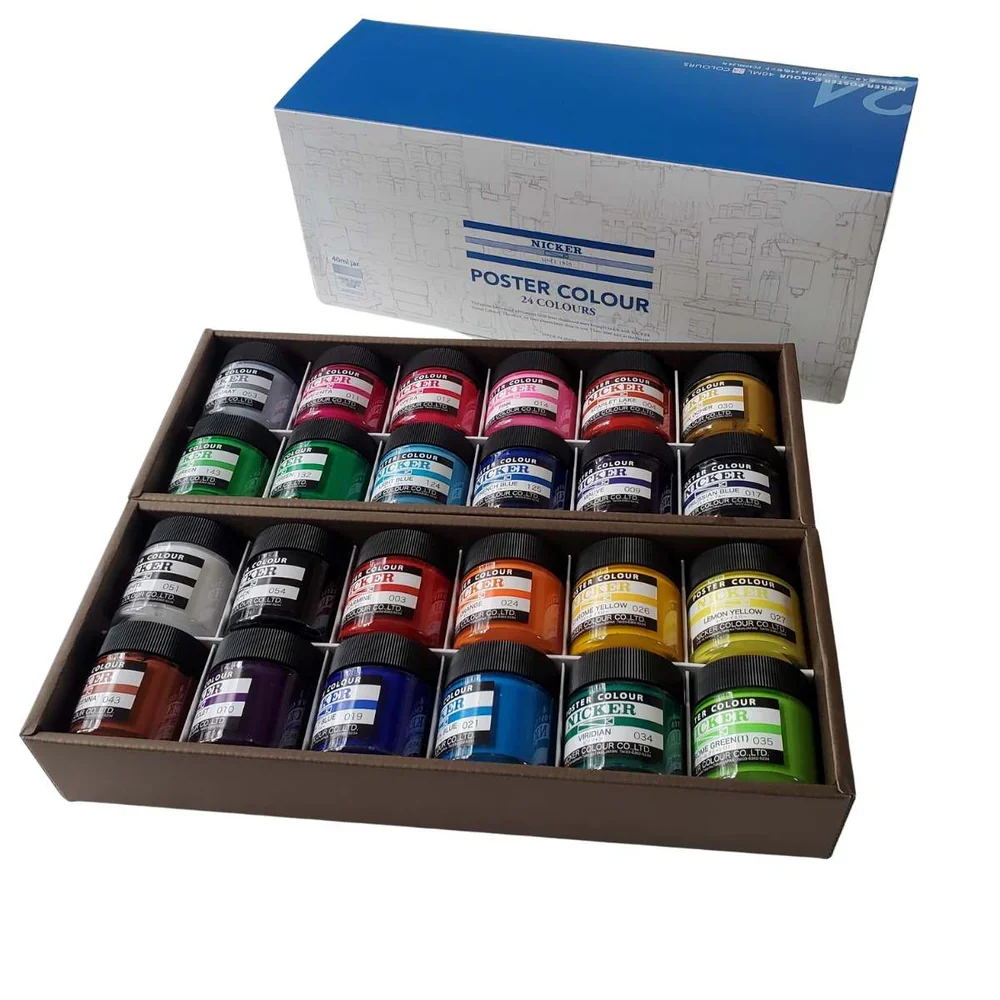
Exploring the Art of Animation Backgrounds: A Journey with Mr.Takeshige
Exploring the Art of Animation Backgrounds: A Journey with Mr.Takeshige

Imagine stepping into the enchanting realm of Studio Ghibli, where vibrant landscapes come to life, tantalizing your imagination. It all begins with the subtle mastery of painting backgrounds. In this blog post, we journey through the art of background painting, guided by the expert hand of renowned art director Takehisa Kosugi. Alongside a diverse group of students, we discover the nuances of color, technique, and creativity that breathe life into animated worlds.
The Magic of Studio Ghibli Backgrounds
Studio Ghibli is renowned for its breathtaking backgrounds. These visuals are not merely backdrops; they are integral to the storytelling. They create a world that captivates audiences and draws them into the narrative. But what makes these backgrounds so iconic? Let's explore.
1. Exploration of Iconic Backgrounds
Each Ghibli film showcases unique and memorable backgrounds. From the lush forests of Princess Mononoke to the whimsical landscapes of My Neighbor Totoro, the artistry is astounding. These settings are rich in detail and emotion. They often reflect the characters' inner journeys.
- Nature's Beauty: Ghibli backgrounds often highlight the beauty of nature. The vibrant greens, deep blues, and warm earth tones create a sense of wonder.
- Urban Landscapes: Films like Spirited Away present intricate cityscapes. The bustling streets and towering buildings add depth to the story.
- Fantasy Elements: Ghibli's use of fantastical elements in backgrounds, such as floating islands or magical forests, enhances the sense of adventure.
These backgrounds are not just pretty pictures. They serve as a canvas for emotions. They help viewers connect with the characters and the story. It's like stepping into a painting where every brushstroke has meaning.
2. The Importance of Color Theory in Animation
Color plays a crucial role in animation. It can evoke feelings and set the mood. As one famous quote states,
"Color is the heartbeat of animation; it sets the mood and evokes emotions."
In Ghibli films, color is used thoughtfully. Each hue is chosen to reflect the story's tone.
- Warm Colors: Reds and yellows can create feelings of happiness or excitement.
- Cool Colors: Blues and greens often evoke calmness or sadness.
- Contrasting Colors: The use of contrasting colors can highlight important moments or emotions.
For instance, in Spirited Away, the vibrant colors of the spirit world contrast sharply with the dull tones of the human world. This difference emphasizes the protagonist's journey and growth.
3. Shinichi Ikeda's Influence on Ghibli's Background Art
Shinichi Ikeda is a name synonymous with Ghibli's stunning backgrounds. His techniques and vision have shaped the studio's artistic style. Ikeda's work emphasizes the importance of detail and atmosphere. He believes that backgrounds should enhance the story, not distract from it.
In recent instructional programs, Ikeda has shared his knowledge with aspiring artists. He teaches them about the careful application of watercolor techniques. His approach encourages students to observe the world around them, capturing its essence on paper. This hands-on learning is vital for understanding background artistry.
Ikeda's influence extends beyond just technique. He inspires a new generation of artists to appreciate the beauty of backgrounds in animation. His teachings remind us that every detail counts.
In conclusion, the magic of Studio Ghibli backgrounds lies in their ability to tell stories. They are a blend of artistry, emotion, and color theory. For those looking to explore their own artistic journey, high-quality art supplies are essential. Check out Nicker's collection for the best materials to bring your creative visions to life.

Learning the Techniques: From Basics to Mastery
In the world of painting, mastering the techniques can feel like a daunting journey. However, with the right guidance, anyone can learn to express their creativity on canvas. This blog section dives into the painting methods demonstrated in class, focusing on the water washing technique and showcasing real-time examples of students applying their newly acquired skills.
An Overview of Painting Methods
During the class, students were introduced to various painting methods. These methods are not just about applying paint; they are about understanding the medium. Two key techniques stood out:
- Technique 1: Water Waxture - This technique involves the careful application of water to create smooth transitions and blends in watercolor painting.
- Technique 2: Color Blending - This method focuses on mixing colors to achieve depth and richness in artwork.
Each technique plays a crucial role in developing a painter's skill set. They allow for experimentation and creativity, making the process enjoyable and fulfilling.
Step-by-Step Guidance on Water Washing Technique
Water washing is a foundational technique in watercolor painting. Mr.Takeshige provided clear, step-by-step guidance to help students grasp this method effectively. Here’s a simplified breakdown:
- Prepare the Paper: Start by stretching the drawing paper with water. This prevents it from warping during the painting process.
- Choose the Right Side: Ensure you are painting on the correct side of the paper for optimal results.
- Apply Water: Use a brush to apply water evenly across the area you plan to paint. This helps the paint flow smoothly.
- Add Paint: Introduce your chosen colors to the wet surface. Watch how the colors blend and create beautiful gradients.
Mr.Takeshige emphasized that the consistency of the paint is vital. Too thick, and it won’t blend well; too thin, and it may lose vibrancy. This careful balance is what makes the water washing technique so effective.
Real-Time Examples of Students Applying Learned Skills
During the class, students like Yamazaki and Ichiro showcased their progress. Each came from different backgrounds, which influenced their learning experiences. Yamazaki, despite his lack of practical drawing experience, eagerly followed Mr.Takeshige’s demonstrations. He was particularly proud of how he executed the foundational elements introduced in the lesson.
Ichiro, returning to art after decades, displayed a thoughtful approach. He focused on incorporating color gradients into his work, demonstrating how the techniques learned can be applied in various ways. Observing their progress was inspiring. It highlighted that
"Practice makes progress; every stroke counts towards your journey."
Mr.Takeshige provided constructive feedback throughout the session. His encouragement motivated the students to push their boundaries. The atmosphere was filled with excitement as they experimented with their newfound skills.
Key Takeaways
Layering and blending are crucial for depth in painting. These techniques allow artists to create stunning visuals that captivate viewers. The iterative process of learning each technique thoroughly before combining them is essential. Mr.Takeshige’s guidance emphasizes this point, ensuring that students build a strong foundation.
Whether you’re a beginner or returning to art after a long break, the journey of learning painting techniques can be rewarding. If you’re inspired to explore these methods further, consider checking out the high-quality art supplies available at Nicker. They offer everything you need to embark on your artistic journey.
Sharing Experiences: Students’ Perspectives
Art has a unique way of bringing people together. It transcends age, background, and experience. In a recent instructional program led by the talented Mr.Takeshige, students shared their personal journeys into the world of animation art. Their stories reflect not just their individual paths but also the transformative power of art education.
Individual Stories from Students
Take Yamazaki, for example. At 53, he works in sales at Nicker, a company renowned for its high-quality art supplies. Despite his success in sales, he admits to having little drawing experience. His journey is a testament to the idea that it’s never too late to start something new. He is eager to learn, and his enthusiasm is infectious.
Then there’s Ichiro , a remarkable 75-year-old former president of the same company. After a long hiatus of over sixty years from art, he has decided to pick up a brush again. His story resonates with many who think they’ve missed their chance. As he puts it,
“At 75, it's never too late to pick up a brush!”
This statement encapsulates the spirit of the program.
Transforming Perceptions of Animation Art
The lessons taught by Mr.Takeshige have significantly changed how these students view animation art. Initially, they approached the subject with trepidation. However, as they engaged in hands-on activities, their confidence grew. They learned about the intricate techniques involved in watercolor painting, particularly the importance of preparing the drawing paper.
- Understanding the right paint consistency.
- Mastering the technique of applying background colors.
- Experimenting with color gradients to create depth.
These lessons not only enhanced their skills but also opened their eyes to the beauty of animation art. They began to appreciate the meticulous work that goes into creating stunning visuals. The transformation in their perception is evident as they express a desire to continue honing their skills.
The Camaraderie Built Through Shared Challenges
One of the most heartwarming aspects of this program is the camaraderie that develops among students. As they face challenges together, they support one another. This shared experience fosters a sense of community. Beginners like Yamazaki find encouragement from seasoned learners like Ichiro. They cheer each other on, creating a nurturing environment.
After their first painting session, Yamazaki expressed a desire to try painting independently. This eagerness to improve is a direct result of the supportive atmosphere. Ichiro, too, is motivated to apply what he learned, showing that age is no barrier to creativity.
Universal Passion for Art
Each student’s experience highlights the universal passion for art. It unites people across generations and skill levels. The program led by Mr.Takeshige is not just about learning techniques; it’s about embracing creativity and expressing oneself. The excitement in the air is palpable as students look forward to their next lessons.
For those inspired by these stories, consider exploring the art supplies available at Nicker. Whether you're a beginner or an experienced artist, the right tools can make all the difference in your artistic journey.

Conclusion: Bringing it All Together
As we wrap up this exploration into the world of animation, it’s crucial to reflect on the importance of background artistry. Backgrounds in animation are not just mere backdrops; they set the tone, mood, and context for the characters and stories unfolding on screen. They are the silent narrators that enhance the visual storytelling experience. Without a well-crafted background, even the most vibrant characters can feel lost. This is why understanding the techniques behind creating these backgrounds is essential for any aspiring animator.
In this journey, we’ve seen how individuals like Yamazaki and Ichiro, despite their varied experiences, have embraced the challenge of learning. Their stories remind us that it’s never too late to pursue a passion. Whether you’re stepping back into art after decades or starting fresh, the key is to embrace your journey. Each stroke of the brush, each layer of paint, contributes to your growth as an artist. As Mr.Takeshige wisely noted, “Every artist was first an amateur; believe in the process.” This quote encapsulates the essence of artistic growth. It encourages artists to appreciate their beginnings, no matter how humble.
Moreover, continuous learning is vital in the artistic realm. The world of animation is ever-evolving, with new techniques and technologies emerging regularly. Artists must cultivate a mindset of growth. This mindset can revolutionize their artistic pathways. It’s not just about mastering a skill; it’s about exploring, experimenting, and evolving. Art is a lifelong process that extends beyond classrooms. It thrives in practice, in the act of creating, and in the willingness to learn from every experience.
As Mr.Takeshige guided his students through the intricacies of watercolor painting, it became clear that the journey is as significant as the destination. The excitement in the room was palpable as they learned to mix colors and apply techniques. Each participant, regardless of their background, was engaged and eager to improve. This enthusiasm is what every artist should strive for. It’s about the experiences shared along the way, the mistakes made, and the lessons learned. These moments shape an artist’s unique voice and style.
In conclusion, aspiring artists should take heart. The path to mastering art is filled with challenges, but it is also rich with rewards. Embrace your journey, learn continuously, and remember that every expert was once a beginner. The animation world is waiting for your unique contributions. So, why not take the next step? Explore high-quality art supplies that can help you on your artistic journey. Visit Nicker's collection to find the tools that will inspire your creativity and enhance your skills. Your artistic adventure awaits!
TL;DR: This post explores the process of learning background painting techniques for animation, highlighting experiences from a class led by a Studio Ghibli art director, featuring tips and insights for aspiring artists.
